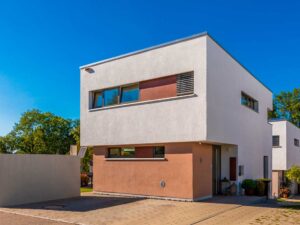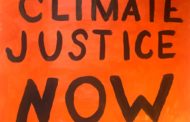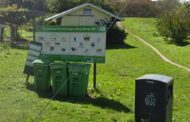
Designing Your Dream Home!
By Jade Christensen
Everyone has a dream house, and many are considering building one themselves. With Maine’s increased housing demand, this dream is becoming a reality. In past Bright Idea columns, we have discussed heat pumps, insulation, and other energy-saving strategies. However, now it is time to discuss sustainable home design by highlighting passive and active house design techniques.
Passive House Design

A passive house design is one of the more well-known designs for building a sustainable house. It is known for its thick walls and small windows for a heavy focus on energy conservation. A passive house design focuses on five key principles in its building process:
- Continuous Insulation: This layer of insulation wraps around the structure without interruptions.
- Airtight Construction: Insulation is only as good as what surrounds it; keeping the structure airtight helps maintain the desired air temperatures
- High-Performance Windows and Doors: This blends into an airtight construction, removing any air leaks from the house
- Heat Recovery Ventilation: To bring in fresh air and reduce the amount of cooled or warm air lost from within an airtight house. Additional ventilation systems may need to be added.
- Solar Heat and Solar Shading: Designing the house’s direction and location so the sun will heat it in the winter and cool it in the summer is a common way to reduce the demand for heating and cooling a house, depending on the season. Planting trees or creating sunshades is a common way to do this.
Active House Design
Active house design focuses on bringing natural light and using technology to create a more sustainable living space. This design style focuses on three key principles: comfort, energy, and environment. The idea of an active house is not only about the efficiency of the house itself but also about the positive influence it has on those who live in it.
Comfort brings the outdoors in, focusing on daylight and fresh air to improve the quality of the indoor climate. Bringing in an adequate amount of daylight, improving indoor temperatures, and focusing on good air quality to help achieve health and happiness for those who live inside.
Energy—This aspect is very similar to that of a passive house design by focusing on decreasing energy consumption. However, active housing also has a larger focus on obtaining renewable energy resources to counteract the energy that is being used.
Environment—The final aspect is focused on ensuring that reusable materials are used to maximize the life of the building and that the construction process is sustainable. It may include greywater processing to reduce the house’s impact on the clean energy supply or using more recycled or reclaimed materials in the construction process.
Passive and active housing designs overlap in their focus on saving energy while also making them withstand the test of time. As Maine continues to increase its housing stock, incorporating these principles into the housing design is another great step to improving our environmental footprint while creating more housing.
Sustainable Home Design References
- Eriksen, Kurt, Rode, Caste (2013) Active House Specifications – evaluation of comfort, energy, and environment in buildings. REHVA Journal. https://www.rehva.eu/rehva-journal/chapter/active-house-specifications-evaluation-of-comfort-energy-and-environment-in-buildings
- Fontan, Jorge. (2020). Passive House Design. Fontan Architecture. https://fontanarchitecture.com/passive-house-design/
- Green Building Consultanting & Engineering. https://www.greendesignconsulting.com/single-post/passive-active-design-in-green-homes
- Norris, Neil. (2023). Five Principles of Passive House Design and Construction. Passive House Accelerator. https://passivehouseaccelerator.com/articles/five-principles-of-passive-house-design-and-construction
- Roof Maker. (2019). Active House VA Pasive House – Which Is The Best For You? Roof Makers. https://roof-maker.co.uk/blog/active-house-vs-passive-house/
PCAT
The Portland Climate Action Team (PCAT) is a volunteer group of greater Portland residents committed to addressing the current climate crisis. We advocate for reducing greenhouse emissions in Portland and promote the equitable transition from fossil fuels to clean renewable energy. PCAT supports the implementation of the One Climate Future Plan and the city’s other climate goals.
FMI email Portlandclimate@gmail.com or visit https://facebook.com/PortlandClimateActionTeam.





